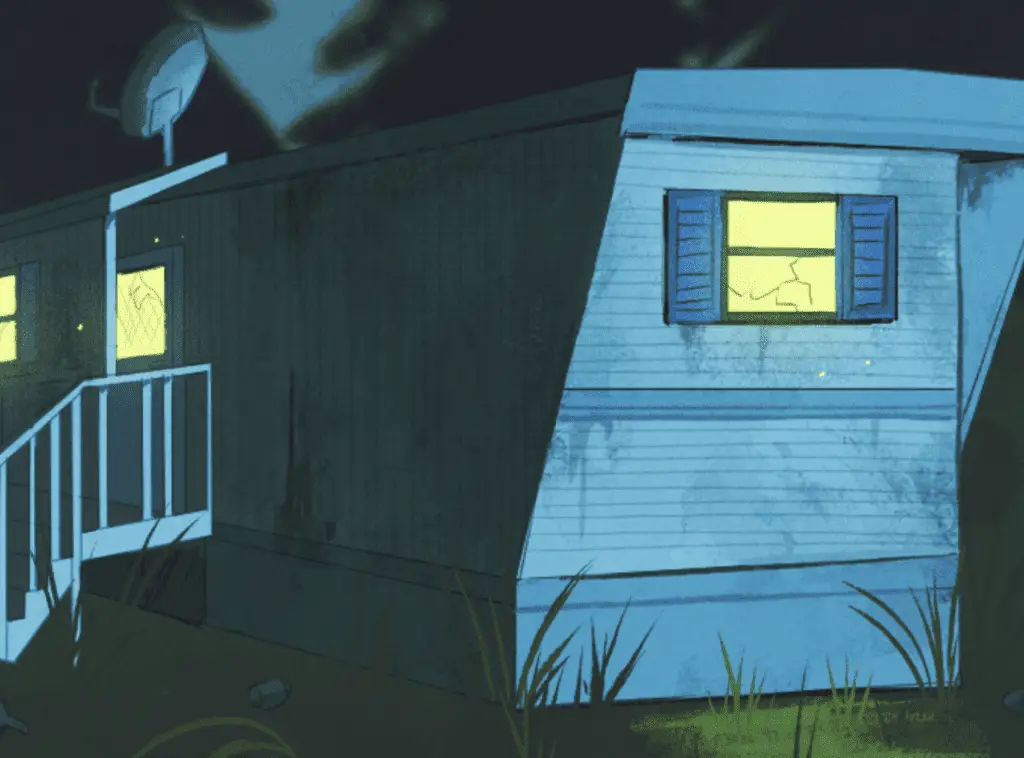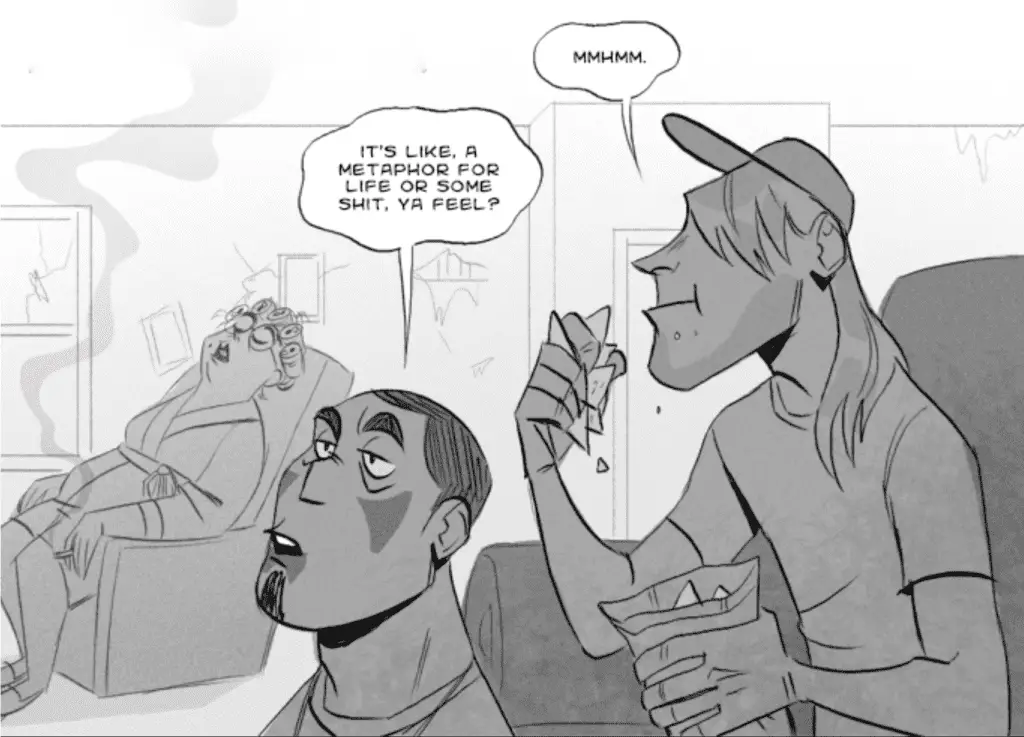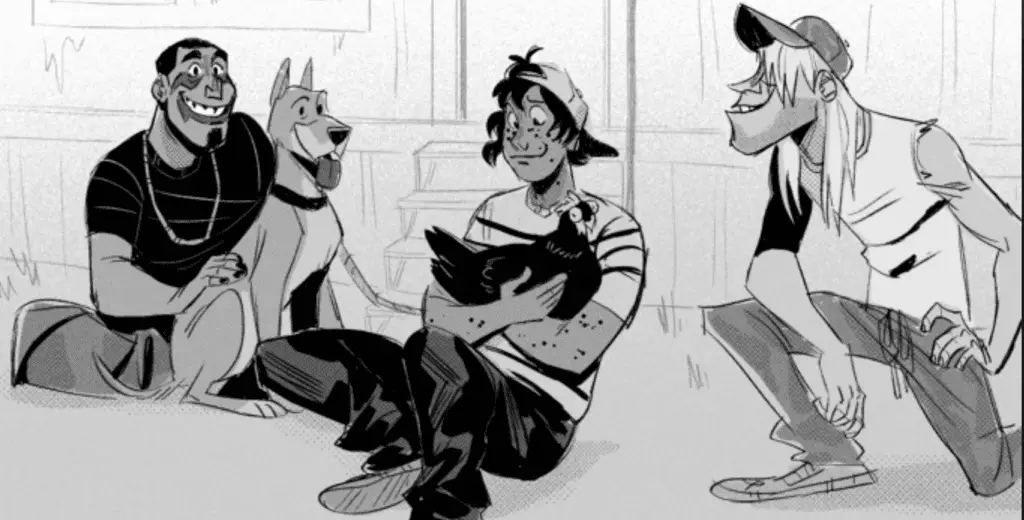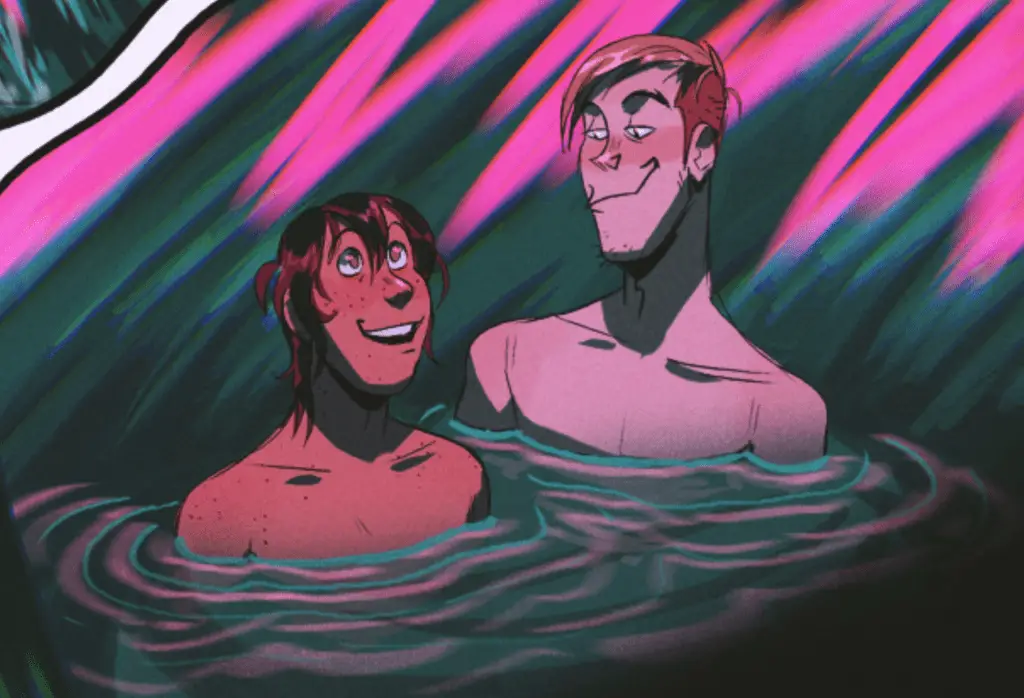I’m not a big reader of webcomics. I confess I have started many and not finished them. For some reason it’s a format I struggle to hold my attention on, especially to come back to for updates each week. But recently, a particular webcomic grabbed me by the shoulders, shook me, and didn’t let me go. I am now a devoted fan, eagerly awaiting each update, reading and re-reading the chapters that have already been published. That webcomic is Long Exposure.
Long Exposure, created by Mars Heyward, is an ongoing webcomic that focuses on two high school kids discovering superpowers and love together. It has a compelling plot reminiscent of IT, Super 8, Stranger Things, and other dramas about teens discovering something supernatural or a creepy secret government science projects. Long Exposure is also beautifully drawn, with cinematic action and incredibly nuanced emotions conveyed through the characters’ facial expressions. Beyond these qualities, though, what makes the comic so meaningful to me and so many other people is its representation of characters we just don’t get to see very often in media.
*** Warning for minor spoilers ***

The two main characters (and more than one of the side characters) are queer, and multiple characters are people of color, but those are not the only kinds of important representation in the comic. Many of the characters come from a lower socio-economic background and live in a trailer park. Non-traditional family arrangements are portrayed, which is infuriatingly rare in media even though these kinds of families are common in real life. One of the main characters, Mitch, was raised by a single mom. His mom is now in prison, so he has moved in with his aunt. The other main character, Jonas, along his biological sister Sidney, are foster kids in a home with several other foster siblings.
However you slice the numbers, a fairly large percentage of marriages end in divorce, and it’s more common than it used to be for parents to never marry. This means that a whole lot of kids grow up in single-parent households—27% in the 2010 U.S. Census. This is a sizable minority. Yet, single-parent families are still relatively rare in media (TV, movies, comics, etc.) When they are there, they are often shown as a tragic situation in an otherizing way. Often, a love interest swoops in to the “rescue” of the family.
Other demographics that are rarely shown in media are foster kids—there were about 400,000 in the U.S. in 2016—and kids who have an incarcerated parent, who numbered 2.7 million in 2013, or 3.6% of U.S. children. The makers of Sesame Street recognized that was a sizable enough chunk of the population to warrant a new character with an incarcerated parent to reach out to those kids. Sesame Street has always been a forward-thinking, educational program, but you’d hardly know this demographic was so large watching other mainstream media, unless it’s a show with prison as a major plot point.
The plot of Long Exposure is not specifically about family arrangements or class background. It’s about Mitch and Jonas growing closer as they work on a school project together, discover a mysterious government facility hidden in the woods, and develop strange abilities after falling into a puddle containing an unknown substance (which they later see people in hazmat suits cleaning up). The characters’ backgrounds are just that: background to the main storyline. Their backgrounds are more or less presented as run-of-the-mill, which is what I find so refreshing.

For example, Jonas starts hanging around with Mitch and his friends, who live in a trailer park. We see Mitch’s aunt, asleep in curlers in a chair in the middle of the day—she works the night shift. Mitch explains an old photo Jonas finds of his family: it shows Mitch, his late brother, and his mom, with a man Mitch has ripped out of the photo. It’s not Mitch’s step-dad, who Jonas has heard about, but an ex of Mitch’s mom who left the family after his brother died. Later on, Jonas gets introduced to the chickens that one of his new friends keeps in their yard by their trailer, something you don’t usually see in middle-class suburbs.

I grew up with a single mom. We didn’t live in a trailer, but we moved from apartment to apartment. One was a basement apartment; one was a “fourplex” unit with a mean landlady that yelled at us when I drew on the sidewalks with chalk as a kid. I have half-siblings on both my mom’s and my dad’s side, as both my parents had other relationships. This is common, but families like mine are still underrepresented in media. When they are represented, they are frequently otherized and depicted as pathological.
I was captivated by the 1999 TV show Freaks and Geeks. I especially loved the character Kim, because she seemed more like the kind of kids I grew up with and went to school with—especially compared to the family of the main characters, Lindsay and Sam. I will never forget the episode where Lindsay meets Kim’s family. Every detail is contrasted to what Lindsay is used to, including a loud fight that happens in front of company. I recognized a lot of aspects of my family in that scene, and that recognition felt amazing. Finally, a TV show was showing a family a little like mine. But at the same time, it felt like a slap in the face. The viewer sees Kim’s family through Lindsay’s eyes, and Lindsay looks horrified. Kim’s family is shown as “other” in a serious way. Part of the point was the culture clash Lindsay is experiencing, but it’s also just a commentary on how dysfunctional Kim’s family is.
A bunch of independent films have attempted to portray “trailer trash” (lower-income) kinds of characters, with varying degrees of sensitivity. The 1998 film Slums of Beverly Hills was a favorite of mine, with a lower-class family trying to live in an upper-class neighborhood for the better school district—something that resonated with my family’s priorities growing up. Interestingly, Alan Arkin also shows up in a later film portraying a “quirky” lower-class family, Little Miss Sunshine. I enjoyed that movie, but it was definitely cartoonish and fanciful rather than a realistic portrayal of peoples’ lives. In an early scene, the family sits down to what’s supposed to be a comical dinner of KFC and popsicles. I remember watching that and thinking, “rich people wrote this movie.” The writers seem to have no idea that few working-class families—with all the adults working different shifts and sometimes multiple jobs—have their schedules line up for dinner together around the table.
Some independent films have portrayed financially struggling people in a serious way, like The Florida Project. That film and others like it are tragedies that show how everything goes wrong and poverty spirals. That story is important and reflects what is real life for too many people. Representation needs to include more than tragedy, though. It is also important to see examples of lower-income people just living normal lives and having fun. Long Exposure gives us that.
It’s also rare to see queer characters who come from lower-income backgrounds or non-traditional families, especially in a storyline that isn’t tragic. It’s very important to have representation of the struggles queer people face in different communities (Moonlight comes to mind). But it’s also important to balance portrayal of the struggle with happier stories. Long Exposure doesn’t sugarcoat the things the main characters have to go through. Jonas gets bullied and called homophobic slurs in school before he even realizes he is bisexual. His foster dad, Dean, says homophobic things to Jonas when he forbids Jonas from seeing Mitch; he talks about how it’s his job to steer Jonas onto “the right path.”
But Jonas and Mitch find ways to be together anyway. Mitch encourages Jonas to fight back against his bullies, and is ready and willing to confront Dean as well. As the narrative continues, Dean is shaping up to be a major source of conflict, and there are other dangers around the corner. But in the meantime, Jonas and Mitch spend time together and with their friends, falling in love and having fun. It’s a feel-good story that doesn’t shy away from real issues. This happens to be my absolute favorite kind of story.

These are the kind of things that have brought Long Exposure such a passionate and devoted fanbase. There are a lot of stories out there about teens with superpowers coming of age. But there’s nothing out there quite like Long Exposure. It speaks to something deep in my brain, and I think it’s the same for many other fans. And even if it might not speak to you in quite that way, check it out. It’s just a damn good story.

